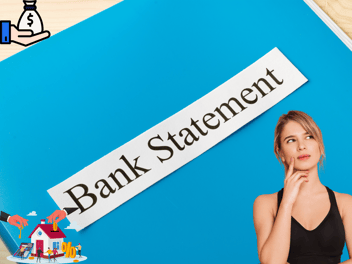3 min read

When applying for a traditional mortgage from a big bank, borrowers have to follow a very tedious process of providing every document they’ve ever encountered in their life. Tax returns, W2s, paystubs, a grocery list from 2012, and their 3rd grade report card. However, for some borrowers - like entrepreneurs, small business owners, real estate investors, and those in commission-based sales - it might be a little hard to document their income through the traditional methods.
If your income is irregular, your tax return and W2 doesn’t tell the full story, and/or you don’t receive a regular paycheck, a no-doc loan may be right for you.
You may have already guessed this, but with a no-doc loan, the traditional documents used to verify a borrower’s income are not used. Instead, lenders relay on 12-24 months of bank statements. These bank statements help the lender derive an average monthly income, which then determines the size of the loan.
If you’ve heard of a no-doc loan and thought they were extinct like dinosaurs and the Cowboys chances of winning a Super Bowl, this blog post may have some good updates for you. The financial crisis of 2008 led to a lot of reform regarding income verification for mortgages. Gone are the days where lenders do not have to verify a borrower’s ability to repay a mortgage. Today, there are federal laws in place that require a lender to verify a borrower’s income and/or assets to ensure they have the ability to repay a loan. Let’s review some of those options:
SISA (Stated Income, Stated Assets)
These bad boys were the go-to loan prior to the 2008 financial collapse. With a stated income, stated asset loan, it was basically the honor system. The borrower wrote down their income and assets on the application. That’s it. Many lenders were like “cool, here’s money”. These loans are almost entirely off the table.
SIVA (Stated Income, Verified Assets)
A stated income, verified asset loan means that the borrower communicates their income and the bank verifies assets. Here, the borrower is typically required to provide 12-24 months of bank statements. This can be a good option for those who work in cash businesses or the self-employed with a high net worth.
NIVA (No Income Verification, Verified Assets)
By now, you likely have figured out how these acronyms work. A no income verification, verified asset loan means that the bank doesn’t verify the borrowers income, but it does verify assets. This path is best suited for those in retirement. They have no income from employment, but may regularly draw from their retirement accounts. If so, this would require the borrower providing their account statements.
NINA (No Income Verification, No Asset Verification)
This option is not only named after one of Christopher Columbus’ three ships, but it also requires the least amount of verification and documentation. The borrower’s application just includes: name, social security number, address of property, and the down payment amount. In this case, the lender is looking at the value of the property to determine the borrower’s ability to repay the loan. For real estate investors, this can be a great option. They’d really just need to show that the rental income they make can repay the loan.
Now that you know the options, let’s review the loan itself. Many are similar to traditional mortgages, so you can still opt for fixed or adjustable rates. It’s important to keep in mind that the interest rates are a bit higher with this type of loan - usually one to three points. It carries more risk for the lender, so that’s part of the deal with a no-doc loan. Down payments usually range from 10-20%, but your credit score influences this (the lender will review your credit score).
Now that you know the basics of the no-doc loan, the next logical question is where do you find them? I’ve got three words for you: Truss Financial Group. The team at Truss takes a common sense approach to lending, and they specialize in no-doc loans. Give them a call today.
Table of Content

Take your pick of loans
Experience a clear, stress-free loan process with personalized service and expert guidance.
Get a quote


